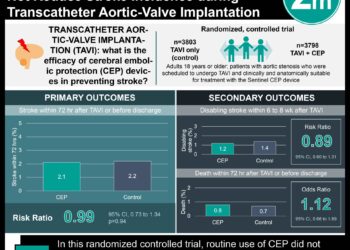Live births from Assisted Reproductive Technologies increasing in recent years
Image: PD. An ectopic embryo.
Key study points:
1. The ideal outcome in Assisted Reproductive Technologies (ART) is a liveborn singleton neonate.
2. From 2000 to 2008, as the number of liveborn singleton neonates from ART have increased, so have the proportion of good perinatal outcomes (normal birthweight, term delivery).
Primer: ART refers to any fertility treatment in which sperm and/or eggs are extracted and handled outside of the body for the express purpose of creating a pregnancy. In Vitro Fertilization (IVF) was the first and remains the most well-known, but others include intracellular sperm injection (ICSI).
ART has been associated with higher rates of birth defects and other adverse perinatal outcomes like low birthweight, in comparison to natural fertility. The latter may be partly attributable to the number of embryos transferred. Between 1997 and 2001, both the number of embryos transferred per cycle and the percentage of pregnancies with high-order multiple gestations (HOMG; 3 or more fetuses) declined steadily. Some adverse outcomes, including preterm delivery and birth defects, may be explained in part by the genetic makeup of the parents who were unable to conceive naturally. Though some increase in the rate of complications is to be expected in an infertile population (who, by definition, have failed natural selection), some experts posit that ART treatment itself may contribute to the higher rates of adverse perinatal outcomes.
The present work evaluates how rates of good perinatal outcomes in the ART population have changed from 2000 to 2008.
Background reading:
1. Up-to-date: Pregnancy Outcome after ART
2. Trends in embryo transfer practice and in outcomes of the use of assisted reproductive technology in the United States. NEJM. 2004 Apr 15;350(16):1639-45.
3. ACOG Committee Opinion: Perinatal risks associated with assisted reproductive technologies
4. CDC site on ART Success rate
This [retrospective cohort] study analyzed the proportion of good perinatal outcomes in the ART population from 2000 to 2008, the majority of which represented IVF births. A good perinatal outcome was defined as a live-born singleton neonate delivered at term (>=37 completed weeks of gestation) and of normal weight (weighing at least 2,500g). They found that both the total number of live-born neonates as well as the total number of (live-born) singletons increased 76% and 95%, respectively. Overall, the proportion of good perinatal outcomes was increased (from 38.6% in 2000 to 42.5% in 2008) among fresh non-donor (patient’s own embryo), fresh donor (donor’s embryo), and frozen non-donor cycles, but not for frozen donor cycles. Previous delivery, transfer of one or two embryos (as compared to >2 embryos), and the presence of one or two fetal hearts (as compared to >2 fetal hearts) on 6-week ultrasound, were all associated with good perinatal outcomes.
In sum: The proportion of ideal outcomes (liveborn, singleton neonates) from ART has increased in recent years. At the same time, the proportion of babies born at term and of normal weight has also increased across all categories of ART, with the exception of frozen donor cycles. These findings suggest that after the American Society for Reproductive Medicine (ASRM) published practice guidelines regarding embryo transfer in 1998 and 1999 that discouraged the transfer of too many embryos, the percentage of single embryo transfers (in fresh, non-donor IVF cycles) increased from 1% to 10%. These findings demonstrate that ART clinicians in the United States have changed practice to decrease adverse outcomes associated with HOMGs and increase good outcomes. Of note, this study did not include outcomes from fertility treatments such as Clomid, an ovulation-inducing medication that is associated with HOMGs because it induces a number of ovarian follicles to produce and release mature eggs.
Click to read the study in [Obstetrics and Gynecology]
By: [LH] and [DB]
© 2012 2minutemedicine.com. All rights reserved. No works may be reproduced without written consent from 2minutemedicine.com. DISCLAIMER: Posts are not medical advice and are not intended as such. Please see a healthcare professional if you seek medical advice.




